Competitor analysis shapes informed decision-making, showing where your business stands against others in the market. It reveals performance gaps, highlights strengths, and guides strategies that lead to measurable growth.
This competitor analysis checklist provides a structured process to evaluate rival performance, benchmark your visibility, and uncover data-driven insights that guide smarter decisions in 2025.
1. Find Competitors
Identifying competitors in search results helps you understand who you are competing with for visibility. Competitors include not only businesses selling similar products or services but also any websites ranking for the keywords you want to target.
Check the SERPs to create your competitor list:
- Conduct keyword research to pinpoint the terms most relevant to your business
- Search each keyword in Google and examine the first page of results
- Track websites that consistently appear in the top 10 rankings
- Identify direct competitors offering similar products or services
- Find indirect competitors ranking for the same keywords
- Explore “People also search for” and related searches to discover additional competitors
Reviewing the top results will reveal patterns in the types of websites that dominate your space.
2. Examine Rival Products and Services
Analyzing competitor products and services reveals how they position themselves and differentiate in the market. Understanding these distinctions allows you to identify gaps, attract customers, and refine your own offerings.
Key areas to review include:
- Direct competitors offering similar products or services
- Competitor websites to explore their full range of offerings, including features, pricing, warranties, and support options.
- Elements that set their products or services apart in marketing, branding, or innovation.
- Features or services that receive positive reviews to identify opportunities for improvement or differentiation.
3. Audit Competitor Websites
Competitor website audits reveal strengths and weaknesses in technical SEO and user experience. Evaluating site structure, crawlability, indexing, page speed, and mobile responsiveness shows how search engines perceive their site.
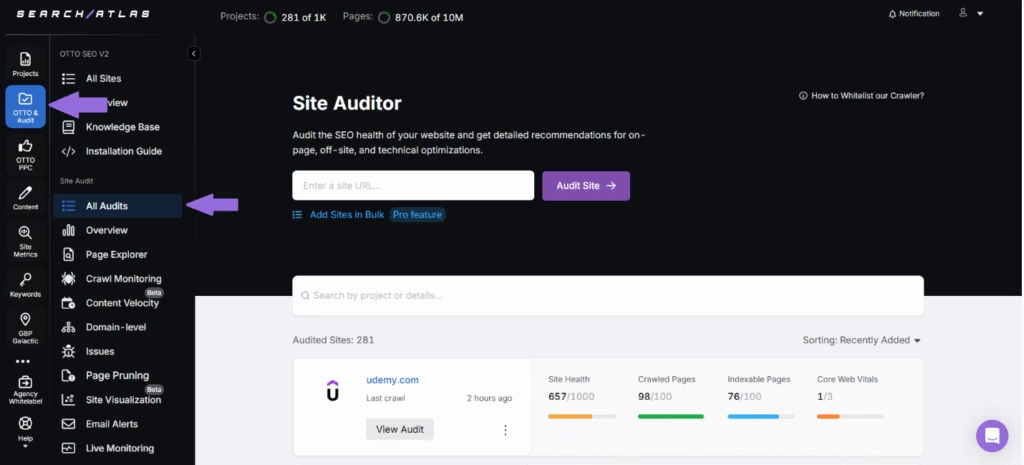
The Search Atlas Site Auditor makes this process faster and more actionable. It scans every page under a domain, flags crawl errors, non-indexable pages, redirect loops, duplicate metadata, and provides clear recommendations with explanations of their SEO impact.
These insights reveal opportunities to strengthen site structure, improve user experience, and boost SEO. Regularly auditing competitor websites helps track technical performance, identify blockers, and prioritize SEO improvements to gain a competitive edge.
4. Study Their SEO Strategy
Analyzing competitor SEO strategies reveals what drives search visibility and highlights opportunities to improve your own rankings. Tracking keywords, traffic, and authority helps you identify gaps and plan smarter strategies.
To simplify this, use Search Atlas Site Explorer to analyze competitor websites. Enter a URL to see organic traffic, ranking keywords, Domain Power, Domain Authority (DA), backlink profiles, URL ratings, and spam scores.
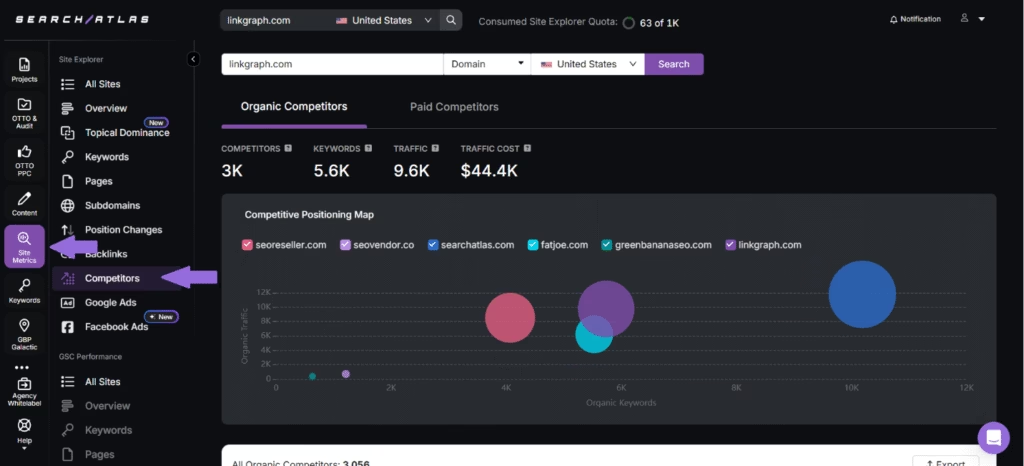
The tool identifies organic and paid competitors, highlights overlapping keywords, and tracks historical trends to monitor performance changes over time. Site Explorer organizes all SEO data in one place, helping you quickly spot top-performing pages, keyword opportunities, and areas where competitors dominate.
5. Analyze Their Online Relevance
Competitor online relevance shows how well a site covers key topics in its niche and maintains authority over time. A site with broad topical coverage signals expertise to search engines and often ranks above others, even with fewer backlinks.
To analyze online relevance, follow these steps:
- Map the subjects your competitors emphasize.
- Identify content clusters, publishing patterns, and areas of deep coverage.
- Spot overlooked or underdeveloped topics that could give you a competitive edge.
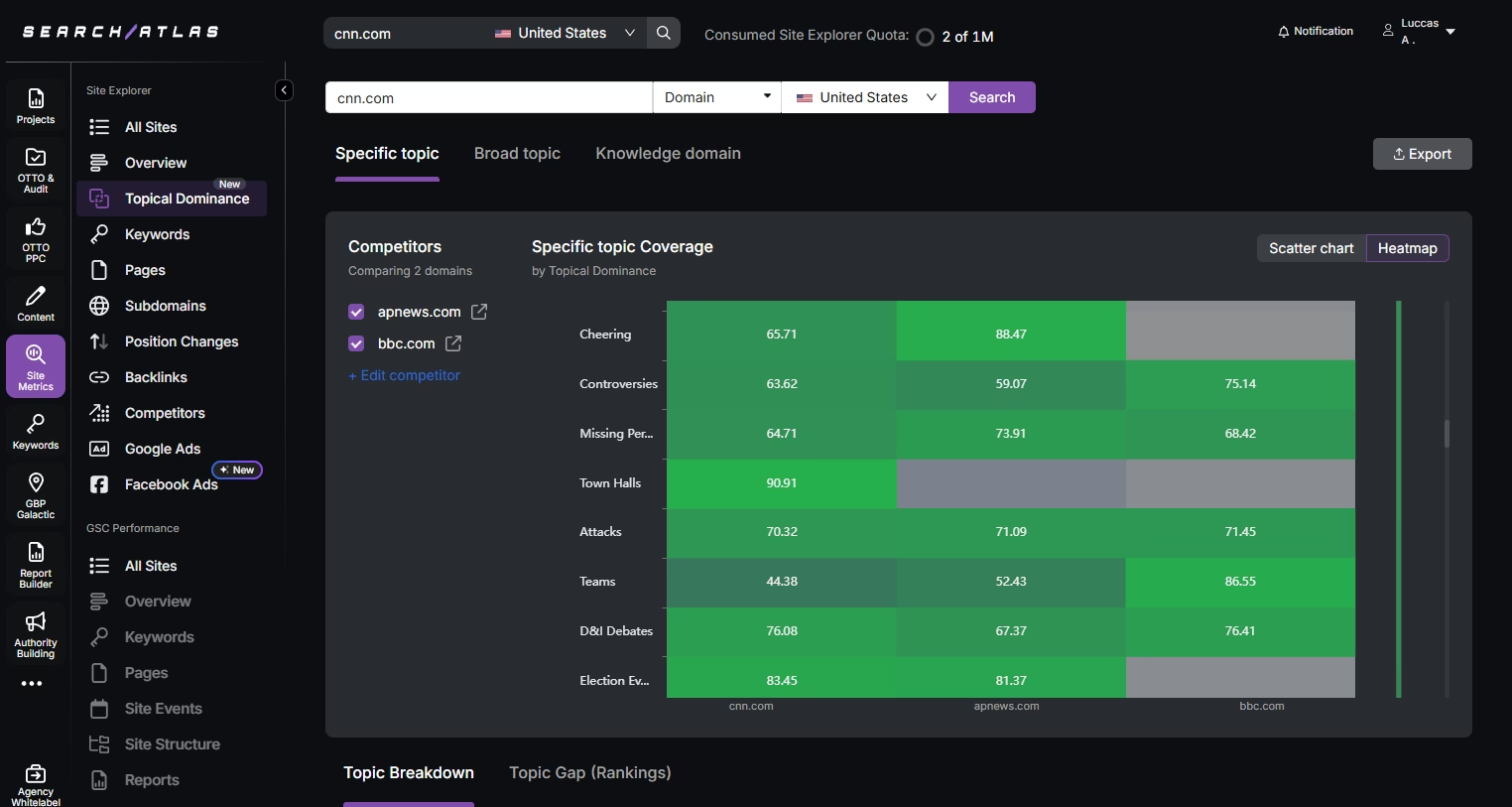
Search Atlas Topical Dominance tool measures subject authority using site embeddings, focus scores, and site radius. It pinpoints coverage gaps, underused terms, and competitor strengths, giving you a clear plan to expand clusters, strengthen topical authority, and improve search visibility.
6. Analyze Their Content Marketing Strategy
Reviewing competitor published content shows which subjects generate engagement and which gaps exist in your own strategy. Focus on identifying the types of content competitors produce, how frequently they post, and which pieces perform best.

The Search Atlas Site Auditor tracks Content Velocity, showing how often competitors publish new content and how their cadence compares to yours. Monitoring this metric helps maintain topical authority and keeps your content fresh.

For deeper content analysis, SCHOLAR allows you to analyze competitor content directly, evaluating clarity, factuality, human effort, and contextual flow. It offers insights on why content performs well and how to apply similar tactics to improve your strategy.
7. Analyze Their Backlink Profile
Competitor backlink profiles reveal where their authority comes from and which sites in the industry consider them credible sources. Studying these links shows you the networks, partnerships, and content placements that help them rank.
Focus on identifying the domains that link to competitors, the topics those links relate to, and the variety of anchor texts used. This analysis uncovers high-value sites you can target for your own outreach, helping you earn links from the same sources that already endorse competitors.
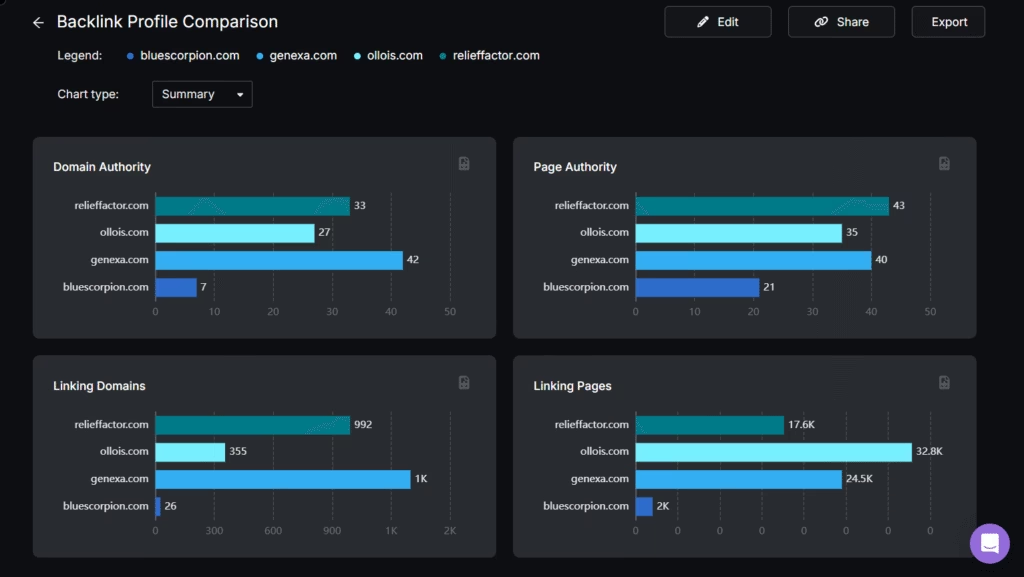
The Search Atlas Backlink Profile tool compares backlink data across up to 6 domains in real time. It displays side-by-side metrics like DA, Page Authority, total linking domains, referring pages, anchor usage, and link types.
This unified view helps benchmark authority, expose link gaps, and uncover new backlink opportunities.
8. Study Their Social Media Strategy
Social media activity shows which content, styles, and interactions resonate with your competitor audience. Analyzing these patterns helps you refine your approach and identify opportunities they miss.
Key areas to review in competitor social media include:
- Platform presence: Identify which channels they use, such as Instagram, LinkedIn, or X.
- Content style: Examine the formats, topics, hashtags, and captions they use to drive engagement.
- Posting rhythm: Track the frequency, timing, and consistency of their updates.
- Engagement signals: Measure average likes, comments, shares, and audience responses.
- Interaction quality: Observe how they respond to questions, feedback, or complaints.
Analyzing these details shows what works in your market and highlights ways you can stand out with unique content and stronger engagement.
9. Read Their Customer Feedback
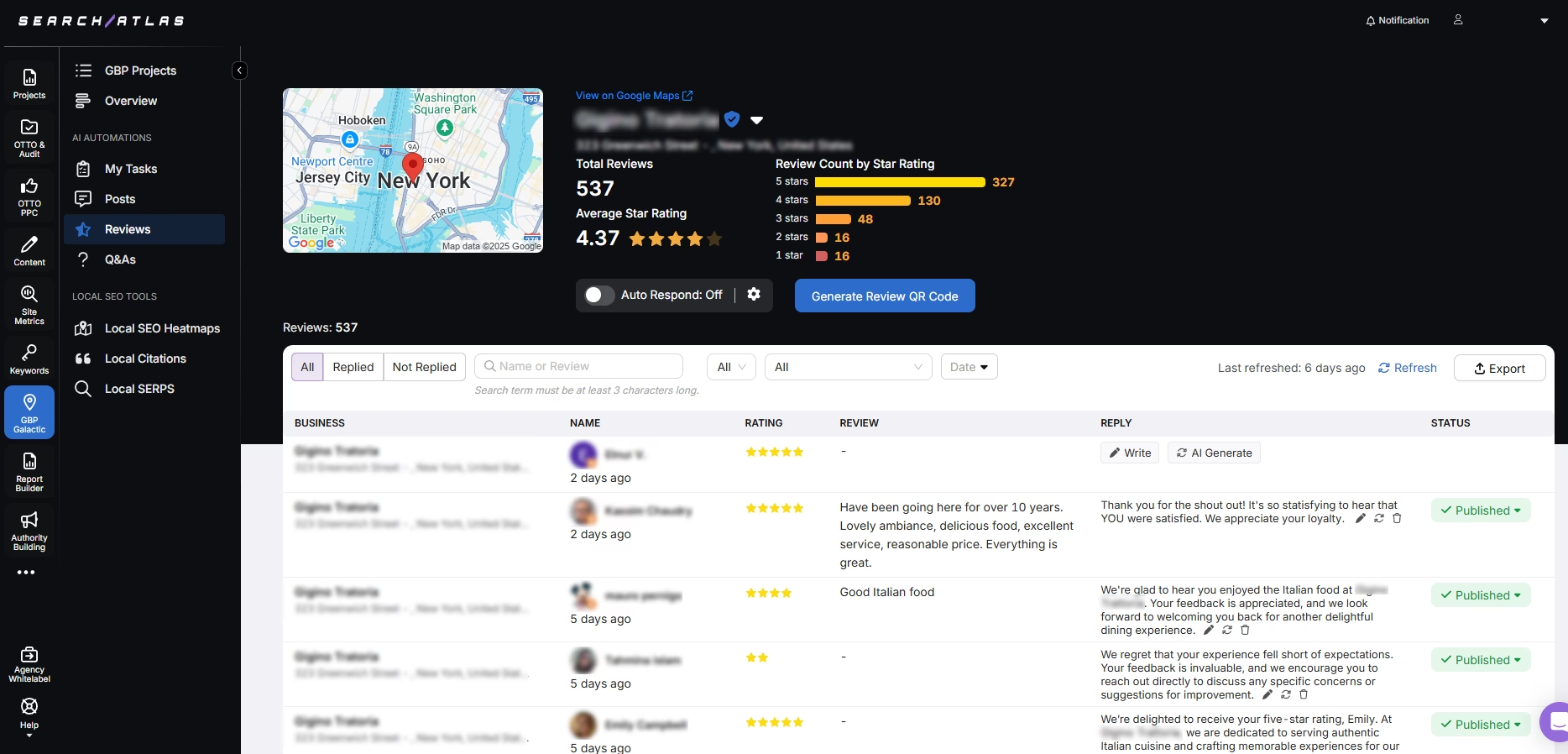
Customer feedback reveals how competitors perform in the eyes of their audience. Online reviews, social media comments, and discussion forums provide unfiltered opinions about product quality, service levels, and brand reputation.
Tracking this feedback uncovers strengths, weaknesses, and recurring trends that shape buying decisions. Look for repeated praise, recurring complaints, and feature requests that competitors haven’t addressed.
Platforms to monitor for competitor reviews include:
- G2 and Capterra for SaaS and digital products, showing verified user feedback, category-specific ratings, and in-depth feature commentary.
- Google Business Profile, Yelp, and Facebook for local businesses, revealing customer satisfaction levels, service quality notes, and visibility impact in local search results.
- Amazon, Walmart, and eBay for retail and e-commerce, offering purchase-verified opinions, shipping experience feedback, and product durability insights.
Focus on identifying both positive and negative patterns, then compare these against your own customer feedback to improve positioning, address market gaps, and improve customer experience.
10. Check Their Ads Campaign Strategy
Competitor ads reveal what messaging, visuals, and tactics resonate with your shared audience. Studying these patterns helps refine your own campaigns and uncover opportunities they are missing.
Key areas to review in competitor advertising include:
- Platform presence: Identify where they run ads, such as Google Search, YouTube, or display networks.
- Creative approach: Examine images, headlines, ad copy, and calls to action to see what engages users.
- Campaign volume: Track how many active ads they run and how often they launch new creatives.
- Ad longevity: Note how long campaigns remain live, longer ones are often top performers.
- Performance signals: Observe engagement cues like click-through rates, comments, or likes when available.
Turn This Competitor Analysis Checklist into Results
Competitor analysis is a continuous process that sharpens strategy over time. Success requires consistent monitoring, accurate data collection, and actionable insights.
Search Atlas centralizes insights on ranking performance, backlink sources, content strategies, and technical SEO, giving you a clear view of your competitors in one place.
With precise execution of this competitor analysis checklist and the automation of Search Atlas, you uncover opportunities, anticipate market shifts, and strengthen your position in SERPs.


